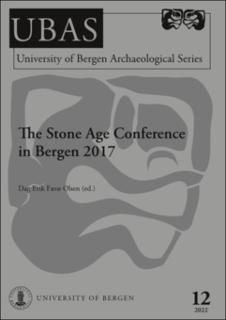Placing – fragmenting – circulating: Mesolithic burial and mortuary practices in Norway in a Northern European perspective
Chapter, Peer reviewed

Åpne
Permanent lenke
https://hdl.handle.net/11250/3000512Utgivelsesdato
2022Metadata
Vis full innførselSamlinger
Originalversjon
In: Dag Erik Færø Olsen (ed.) (2022). The Stone Age Conference in Bergen 2017.Sammendrag
This contribution investigates burial and mortuary practice in the Mesolithic period (9300–3900 BC) in what today is defined as Norway. This issue has received little attention, as poor preservation conditions for bone material in the forest zone of the North has led to a low number of finds. Recent excavations of single burials at e.g. Brunstad and Sømmevågen trigger off a reassessment of the topic. The twelve sites with human bones, which could be identified, dating to the Middle and Late Mesolithic, were studied and compared. Even though statistically not significant, they exhibit some common traits: Human remains are mainly found in the places of the living: on coastal settlement sites, including caves/rockshelters and open-air sites. This broad spectrum of sites indicates human engagement with different natural and cultural elements when dealing with the dead: hollows, water, earth and cultural debris. Both graves with apparently intact human bodies and single (loose) human bones can be identified. Together with sites found in wetlands with seemingly selected types of bones, these bear witness to a broad range of mortuary practices, including inhumation, the fragmenting of corpses and the circulation of selected bones. This is in line with practices observed in other parts of Northern Europe; a special closeness to finds from Western Sweden is observed. As in other areas it is most likely that only a small number of people were actually buried, while most of them received other treatment in death, not easily visible archaeologically. The identification of these various phenomena will hopefully make it possible to identify other find contexts in future, and will be important when discussing social and ritual aspects of Mesolithic hunter-gatherer societies, not least regarding studies on genetics and mobility.